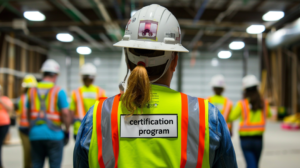In today’s world, where environmental concerns are increasingly at the forefront of global discussions, integrating environmental sustainability into workplace safety practices has become more crucial. This paradigm shift toward Green HSE reflects a growing awareness of the interconnectedness between workplace safety, human well-being, and the planet’s health. This article explores the significance of Green HSE, its benefits, practical strategies for implementation, and the importance of conducting risk assessments in this context.
The Interconnection of Health, Safety, and the Environment
Health and safety initiatives have traditionally focused on protecting workers from immediate physical hazards. However, a broader perspective acknowledges that the environment in which work occurs is equally critical to long-term well-being. Green HSE recognises the inextricable link between a healthy environment and employees’ overall health and safety.
Importance of Risk Assessments in Green HSE
Risk assessments are an essential aspect of Green HSE practices. They help identify and control potential hazards to employees and the environment. Organisations gain a holistic understanding of workplace threats by conducting comprehensive risk assessments that include environmental risks alongside traditional safety hazards. This approach ensures that sustainability considerations are integrated into safety planning and mitigation strategies.
What are the Benefits of Green HSE
Implementing Green HSE practices offers numerous benefits to organisations, employees, and the environment:
• Reduced Environmental Impact: Green HSE practices help minimise a company\’s ecological footprint, contributing to resource conservation, waste reduction, and lower emissions.
•Enhanced Employee Well-being: A healthier environment positively influences employee health and morale. Cleaner air, access to natural light, and sustainable practices contribute to a more positive work atmosphere.
• Regulatory Compliance: Green HSE ensures that organisations meet environmental standards and go beyond, demonstrating a commitment to sustainable practices.
• Cost Savings: Sustainable practices often lead to resource efficiency, reduced energy consumption, and operational cost savings, making Green HSE economically prudent and environmentally responsible.
Are there Practical Strategies for Green HSE Implementation?
Of course, there are. To effectively implement Green HSE practices, organisations can adopt the following strategies:
• Conduct Comprehensive Risk Assessments: Identify and mitigate environmental risks alongside traditional safety hazards to ensure a holistic understanding of workplace threats.
• Implement Waste Reduction and Recycling Programs: Minimise the environmental impact of daily operations through waste reduction strategies and proper disposal of hazardous materials.
• Invest in Energy Efficiency: Adopt energy-efficient technologies and practices to reduce overall energy consumption within the workplace.
• Foster Employee Engagement and Training: Educate employees about the connection between their actions and environmental impact, fostering a culture of environmental responsibility.
• Promote Supply Chain Sustainability: Extend Green HSE principles to the supply chain by collaborating with environmentally conscious suppliers.
Green HSE represents a holistic approach to workplace well-being by recognising the symbiotic relationship between human health, safety, and environmental sustainability. As organizations increasingly prioritise corporate social responsibility, integrating Green HSE practices becomes a strategic imperative. Embracing a sustainable approach to health and safety safeguards the planet for future generations and creates a safer, healthier, and more resilient workplace today.





